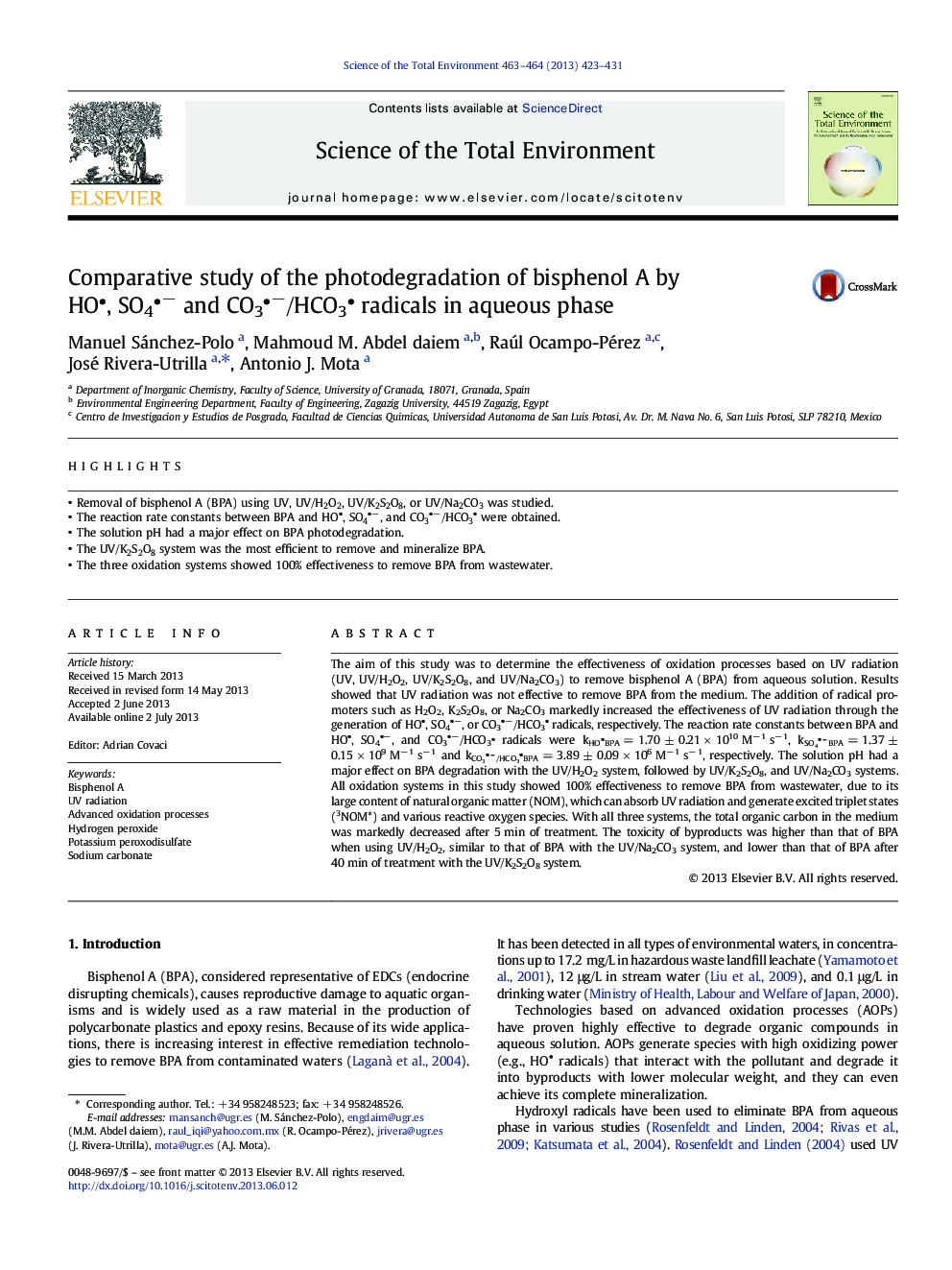| کد مقاله | کد نشریه | سال انتشار | مقاله انگلیسی | نسخه تمام متن |
|---|---|---|---|---|
| 6332791 | 1619798 | 2013 | 9 صفحه PDF | دانلود رایگان |
عنوان انگلیسی مقاله ISI
Comparative study of the photodegradation of bisphenol A by HO, SO4â and CO3â/HCO3 radicals in aqueous phase
دانلود مقاله + سفارش ترجمه
دانلود مقاله ISI انگلیسی
رایگان برای ایرانیان
کلمات کلیدی
موضوعات مرتبط
علوم زیستی و بیوفناوری
علوم محیط زیست
شیمی زیست محیطی
پیش نمایش صفحه اول مقاله

چکیده انگلیسی
The aim of this study was to determine the effectiveness of oxidation processes based on UV radiation (UV, UV/H2O2, UV/K2S2O8, and UV/Na2CO3) to remove bisphenol A (BPA) from aqueous solution. Results showed that UV radiation was not effective to remove BPA from the medium. The addition of radical promoters such as H2O2, K2S2O8, or Na2CO3 markedly increased the effectiveness of UV radiation through the generation of HO, SO4â, or CO3â/HCO3 radicals, respectively. The reaction rate constants between BPA and HO, SO4â, and CO3â/HCO3 radicals were kHOBPA = 1.70 ± 0.21 Ã 1010 Mâ 1 sâ 1, kSO4 - BPA = 1.37 ± 0.15 Ã 109 Mâ 1 sâ 1 and kCO3 - /HCO3BPA = 3.89 ± 0.09 Ã 106 Mâ 1 sâ 1, respectively. The solution pH had a major effect on BPA degradation with the UV/H2O2 system, followed by UV/K2S2O8, and UV/Na2CO3 systems. All oxidation systems in this study showed 100% effectiveness to remove BPA from wastewater, due to its large content of natural organic matter (NOM), which can absorb UV radiation and generate excited triplet states (3NOM*) and various reactive oxygen species. With all three systems, the total organic carbon in the medium was markedly decreased after 5 min of treatment. The toxicity of byproducts was higher than that of BPA when using UV/H2O2, similar to that of BPA with the UV/Na2CO3 system, and lower than that of BPA after 40 min of treatment with the UV/K2S2O8 system.
ناشر
Database: Elsevier - ScienceDirect (ساینس دایرکت)
Journal: Science of The Total Environment - Volumes 463â464, 1 October 2013, Pages 423-431
Journal: Science of The Total Environment - Volumes 463â464, 1 October 2013, Pages 423-431
نویسندگان
Manuel Sánchez-Polo, Mahmoud M. Abdel daiem, Raúl Ocampo-Pérez, José Rivera-Utrilla, Antonio J. Mota,